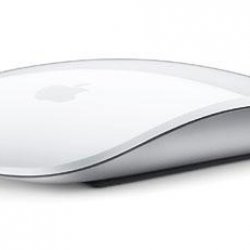Grundelementer i brugergrænsefladen

Hell0 friends,
We have discovered that we have some international followers. So this post is going to be in english.
Today we will explain the different kinds of user interfaces:
GUI
Graphical user interface
Any interface that uses graphics can be called a GUI.
A type of user interface that allows users to interact with the electronic devices through graphical icons and visual indicators such as secondary notation.
UI
User interface
The interaction between humans and machines.
Goal: is to produce a user interface which makes it easy, efficient and enjoyable (user-friendly) to operate a machine in the way which produces the desired result.
HMI
Human-machine interface
- Man-machine interface (MMI)
- Human computer interface (HCI)
Interfaces machines with physical input hardware.
Keyboards, mice, speakers, printers ect.
WIMP
Human-computer interaction.
Windows, Icons, menus, pointer
Synonym for graphical user interface (GUI)
WIMP system:
- A window runs a self-contained program, isolated from other programs that (if in a multi-program operating system) run at the same time in other windows.
- An icon acts as a shortcut to an action the computer performs (e.g., execute a program or task).
- A menu is a text or icon-based selection system that selects and executes programs or tasks.
- The pointer is an onscreen symbol that represents a movement of a physical device that the user controls to select icons, data elements, etc.
WYSIWYG
What you see is what you get
Et system in which content can be edited in a form closely resembling its appearance when printed or displayed as a finished product.
Printed document, web page, or slide presentation
Post-WIMP
In computing, post-WIMP (“windows, icons, menus, pointer”) comprises work on user interfaces, mostly graphical user interfaces, which attempt to go beyond the paradigm of windows, icons, menus, and a pointing device, i.e. WIMP interfaces.
Examples:
Virtual reality systems
Computer game
Gesture-based interfaces
Voice user interfaces
See-through tools
Smartphones and mobile app
Zooming user interfaces
Tangible user interfaces
Web applications
Smartphones and mobile app example:
WIMP –> Post WIMP


In the examples above, we see two different versions of YouTube: one is an example of the WIMP interface and the other is an example of the Post WIMP
YouTube on the desktop is an example of a WIMP interface because it contains a window, in which YouTube is shown. Furthermore, we see that the version of YouTube on the desktop doesn’t try to go beyond the paradigm of windows, icons, menus, and pointing device, which indicates that this example doesn’t meet the criteria of a post WIMP interface, but instead is a perfect example of a WIMP interface. This is due to the fact that YouTube on the desktop contains a window, an icon, a menu, and a pointing device.
YouTube as a mobile app is an example of a post WIMP interface because it attempts to go beyond the paradigm of windows, icons, menus, and pointing device. This can be seen by the fact that the app doesn’t use a pointing app in the traditional way, but instead uses a touchscreen to function as navigation.
Literature:
https://en.wikipedia.org/wiki/User_interface
https://en.wikipedia.org/wiki/WYSIWYG
https://en.wikipedia.org/wiki/WIMP_(computing)
https://en.wikipedia.org/wiki/Post-WIMP
https://en.wikipedia.org/wiki/User_interface
//nMac Designs





Ingen kommentarer endnu